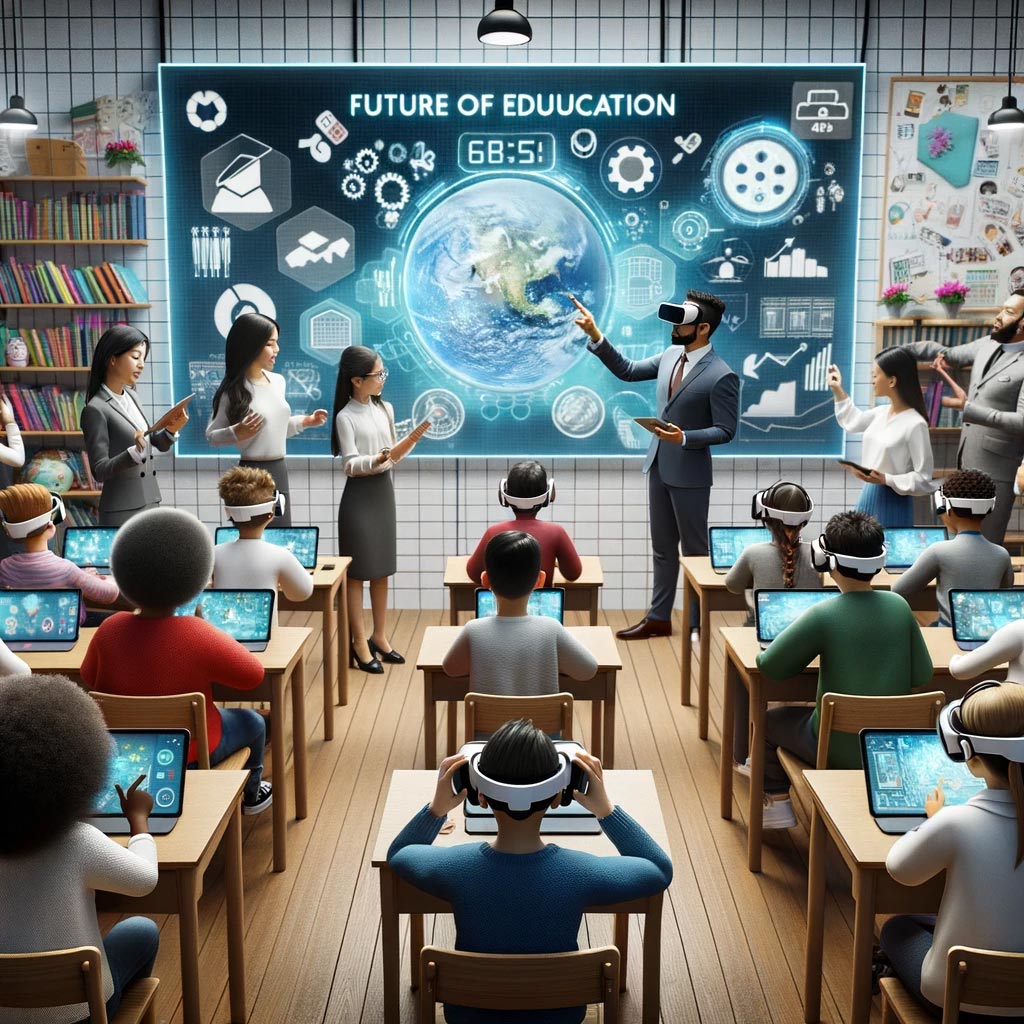
Digital skills are no longer optional; they are now essential to a student's toolkit. These abilities impact how students learn, communicate, and prepare for the future. By acquiring digital skills, students unlock access to tools and resources that enhance their academic performance, prepare them for the workplace, and equip them for lifelong learning.
This article explores ten reasons digital skills are indispensable for students, backed by research, relatable examples, and actionable insights.
Table of Content
Enhanced Learning Opportunities
Access to digital resources significantly transforms students' engagement with learning. Unlike traditional methods that depend on static textbooks and classroom lectures, digital tools provide dynamic, interactive, and personalized experiences. These tools empower students to dive deeper into topics, bridging the gap between theoretical knowledge and practical application.
Platforms like Khan Academy and Coursera exemplify this transformation by offering diverse courses that adapt to varying learning styles. For instance, a student struggling to grasp algebraic equations in a traditional classroom can turn to a step-by-step video tutorial on Khan Academy. These tutorials allow students to pause, rewind, and revisit challenging concepts at their own pace, turning previously overwhelming topics into manageable ones.
The integration of technology in education not only enhances accessibility but also improves retention and comprehension. According to a report by the Education Endowment Foundation, classrooms incorporating digital tools see learning outcomes improve by an average of four additional months per academic year. These tools are particularly beneficial for students with diverse learning needs. For example, visual learners benefit from interactive diagrams, auditory learners from narrated videos, and kinesthetic learners from gamified learning platforms. This versatility ensures that every student, regardless of their preferred learning style, has the opportunity to thrive.
Moreover, digital learning encourages independent exploration. Students can access information that might otherwise be unavailable in traditional classrooms. They can delve into niche topics, follow their curiosity, and deepen their understanding of subjects that ignite their passion.
For instance, a high school student interested in astrophysics can enroll in introductory courses offered by prestigious institutions on platforms like Coursera, gaining knowledge far beyond their standard curriculum. This autonomy in learning boosts academic performance and fosters a sense of ownership and accountability in education.
Digital skills are more than technical proficiencies; they are gateways to creativity, problem-solving, and lifelong learning. By incorporating these skills into education, we prepare students to succeed academically and connect the complexities of the modern world with confidence and integrity. Educators, parents, and policymakers are responsible for ensuring that all students, regardless of their circumstances, have the resources and skills they need to succeed in the digital era.
Preparing for Future Careers

Digital skills have become indispensable in today's fast-evolving job market. The workplace increasingly relies on technology, and proficiency in digital tools is no longer optional. A report by the World Economic Forum highlights that by 2025, over 50% of all jobs will require advanced digital competencies. These skills include proficiency in productivity software like Microsoft Excel, an understanding of data analysis tools, and even basic programming languages.
The importance of digital skills is evident across industries. For example, marketing professionals often use tools like Google Analytics to track campaign performance, while project managers rely on platforms like Trello and Slack to streamline communication and workflow. By introducing students to these tools early, educators can prepare them for the demands of the modern workplace.
Encouraging students to use these tools boosts their technical proficiency and hone their organizational and problem-solving skills. For instance, a student tasked with creating a budget for a class project might use Excel to organize and calculate expenses, gaining practical knowledge and confidence in handling real-world tasks. Such experiences build a foundation for future success, equipping students to meet professional challenges head-on.
Additionally, digital proficiency opens doors to emerging career fields. Coding, artificial intelligence, and data science are becoming highly valued skills, and students introduced to these fields early are better prepared to explore careers in technology-driven industries. For example, a student with a basic understanding of Python might later explore roles in software development or data analysis, areas projected to grow significantly in the coming years.
Building Digital Literacy

Digital literacy extends far beyond the ability to use devices. It encompasses a critical understanding of navigating the vast digital landscape responsibly and effectively. In an era where information is abundant but needs to be consistently accurate, students must develop the skills to evaluate online content critically. They need to differentiate between credible sources and unreliable ones, an ability that is crucial not only for academic success but also for informed citizenship.
A study by the University of Western Australia underscores the significance of digital literacy, describing it as equally important as traditional literacy in modern education. The ability to locate, assess, and utilize information effectively is essential in a world increasingly shaped by digital media. For example, when researching a history paper, a student might encounter conflicting accounts of an event. By cross-referencing facts through trusted academic databases like JSTOR or Google Scholar, they can construct a well-informed argument, showcasing the importance of critical thinking in digital literacy.
Digital literacy also involves understanding digital ethics, privacy, and cybersecurity. Students must learn to navigate online spaces responsibly, ensuring their actions are safe and respectful. This includes knowing how to protect their personal information, recognizing the signs of phishing scams, and adhering to copyright laws. Equipping students with these skills safeguards their online presence and instills a strong sense of digital citizenship.
Fostering Creativity and Innovation

The digital world offers unparalleled opportunities for creativity. From designing visually appealing presentations to coding innovative apps, students can explore and expand their creative potential through technology. Digital tools like Canva, Adobe Spark, and Scratch allow students to experiment, innovate, and bring their ideas to life.
A study by Adobe reflects the transformative power of digital creativity. The study found that 85% of educators believe creativity enhances students' ability to learn and retain knowledge. This belief is supported by countless examples of how digital tools have inspired students to think creatively. For instance, a group of high school students in a community campaign used Canva to design professional-grade posters, gaining technical skills and confidence in their creative abilities.
Moreover, digital tools encourage interdisciplinary learning. For example, a student passionate about environmental conservation might use video-editing software to create a documentary, combining their interests in science, storytelling, and technology. Digital tools enrich education by fostering creativity and preparing students to tackle real-world challenges innovatively.
Improving Collaboration and Communication

Effective collaboration is essential in an increasingly interconnected world. Digital tools have revolutionized how students work together, breaking geographical barriers and enabling seamless communication. Platforms like Google Workspace, Zoom, and Microsoft Teams allow students to share ideas, co-edit documents, and hold virtual discussions in real-time.
A study published in the Journal of Educational Technology found that digital collaboration tools significantly enhance teamwork and problem-solving skills. These platforms allow students to contribute equally, ensuring every voice is heard. For example, during a group science project, students can use Google Docs to draft their report while discussing their progress over a Zoom call. Such experiences improve the quality of their work and teach them how to navigate collaborative environments effectively.
Digital collaboration tools also prepare students for the professional world, where remote work and virtual meetings are becoming increasingly common. Mastering these tools early gives students a valuable skill set for their future careers.
Enhancing Problem-Solving Skills
Digital skills are inherently linked to problem-solving, as navigating technology often requires students to troubleshoot and adapt to new challenges. Whether fixing a software issue, understanding a complex application, or debugging a piece of code, these experiences develop analytical thinking and resilience. For instance, students working with coding tools like Scratch are introduced to logical reasoning, step-by-step analysis, and creativity in finding solutions. By experimenting with sequences, loops, and conditions, they build computational skills and learn to think critically about approaching problems in structured ways.
The Organisation for Economic Co-operation and Development (OECD) emphasizes the role of digital proficiency in improving problem-solving abilities. According to their studies, students skilled in technology consistently outperform their peers in problem-solving assessments. This connection stems from the need to break problems into smaller, manageable parts, which is often applied in coding, troubleshooting software, or even handling digital presentations.
Imagine a student using Google Sheets to analyze data for a project. They encounter errors in their formulas but, through trial and error, identify the correct functions to achieve accurate results. This process mirrors real-world problem-solving, equipping students with transferable skills for academic and professional success.
Promoting Self-Directed Learning
Digital tools have shifted education toward a learner-centric model, empowering students to take control of their academic journeys. With access to e-learning platforms, tutorials, and e-books, students can explore topics that pique their interest and deepen their knowledge beyond classroom boundaries. This autonomy fosters curiosity and encourages lifelong learning habits.
According to Statista, 77% of students use e-learning platforms to complement their classroom education. These platforms cater to various interests and skill levels, making it easier for students to tailor their learning experiences. For instance, platforms like Udemy, Skillshare, and LinkedIn Learning offer courses ranging from creative arts to advanced programming, allowing students to build expertise in areas of their choice.
A high school student interested in graphic design might enroll in a Photoshop Basics course on Udemy. Through video tutorials, hands-on projects, and quizzes, students develop practical skills at their own pace. This experience enhances their technical proficiency and instills confidence in their ability to pursue self-directed learning opportunities.
Self-paced learning also bridges the gap for students with varying learning speeds. While some may excel in structured environments, others benefit from revisiting concepts at their rhythm. Digital tools ensure that every student has the resources to succeed regardless of their pace.
Bridging the Digital Divide
The digital divide—the gap between those with and without access to technology—remains a significant barrier to equitable education. Students without access to digital tools risk falling behind academically and professionally. Therefore, equipping all students with digital skills is crucial for leveling the playing field.
The International Telecommunication Union (ITU) reports that approximately 3.6 billion people worldwide remain offline, and the lack of digital literacy contributes significantly to this statistic. Bridging this gap improves individual outcomes and strengthens communities and economies.
To address this, schools and communities must prioritize initiatives to provide equal technology access. Programs that establish computer labs, free Wi-Fi zones, or device-lending libraries can make a substantial difference. For example, a school in a rural area might partner with local businesses to provide laptops and internet access for students in need.
In an underserved region, a middle school implemented a computer lab initiative where students could access online resources after class. This small step enabled students to complete assignments, explore new subjects, and gain essential digital skills. It also created previously inaccessible opportunities, empowering students to pursue higher education and careers in tech-related fields.
Ensuring Online Safety and Ethics
Navigating the digital world requires more than technical know-how; students must also understand online safety principles and ethics. Issues like cyberbullying, data privacy, and misinformation make it essential for students to develop a responsible approach to using technology.
A survey by Common Sense Media revealed that while 60% of teens are concerned about online privacy, many lack the knowledge needed to protect themselves. This gap underscores the importance of teaching students to safeguard their digital presence.
Key components of online safety include using strong passwords, enabling two-factor authentication, and being mindful of the information shared on social media. Ethical use of technology, such as respecting copyright laws and avoiding plagiarism, is equally critical. These lessons prepare students to be responsible digital citizens who contribute positively to online communities.
Teachers can integrate online safety modules into the curriculum, focusing on real-life scenarios. For instance, a classroom exercise might involve students identifying phishing emails or discussing the consequences of oversharing on social media. By engaging with these topics in a relatable way, students develop the skills to navigate the internet securely.
Supporting Academic Success
Digital skills are powerful tools for improving academic performance. From simplifying research to creating polished presentations, technology streamlines many aspects of learning. Students can access information online, use software to analyze data and present their findings engagingly.
Studies conducted by the National Center for Education Statistics show that students with access to technology perform better in assessments. This improvement is linked to accessing diverse resources, visualizing complex concepts, and collaborating effectively.
Consider a student preparing for a science fair project. They start by researching their topic using credible databases like PubMed or Google Scholar, ensuring their work is well-informed. They then use Excel to organize and analyze their experimental data, creating clear visualizations for their findings. Finally, they design an eye-catching presentation using tools like Canva to share their work with judges and peers. This seamless integration of digital tools enhances the quality of their project and hones valuable skills for future endeavors.
Furthermore, digital tools promote efficiency, allowing students to focus more on learning and less on tedious tasks. Writing tools like Grammarly assist in refining grammar and style, while apps like Quizlet help students prepare for exams with interactive flashcards. These resources ensure that students have the support they need to excel academically.
Conclusion
Digital skills have become fundamental for success in education and future endeavors. By mastering these abilities, students can learn more effectively, prepare for future careers, and navigate the digital landscape responsibly. Educators, parents, and policymakers must prioritize digital education to ensure every student can thrive in an increasingly tech-driven world.
Encourage students to explore digital tools, stay curious, and practice these skills regularly. The benefits will last a lifetime, helping them achieve academic, professional, and personal growth.
Transferable Skills Digital Learning Soft Skills




